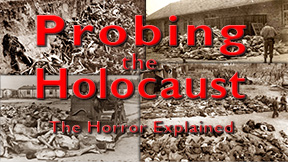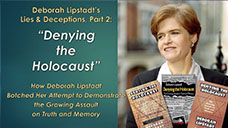A PhD title is defined as evidence that the holder is capable of doing independent scientific or scholarly research. Between October 1990 and the summer of 1993 I was enrolled at the University of Stuttgart, Germany, in order to gain this distinction. For this purpose, I had managed to obtain a scholarship form the prestigious Max Planck Society, which runs an Institute for Solid State Research in Stuttgart-Büsnau, near the Pfaffenwald campus of the University. Though independent of the University, that institute had (and probably still has) an agreement with the University that PhD students enrolled at the University may do their scientific research at that Max Planck Institute. So did I.
The topic of my PhD thesis from the field of theoretical crystallography is somewhat esoteric and exotic. It has nothing to do with German history or the chemistry of certain cyanide compounds, a topic which I investigated in my spare time. So strictly speaking I was conducting two PhD-type studies at once during those years: my official one in the ivory towers of science, and the private one at the crossroads – or should I say in the minefields? – of German history and forensic science.
Electromagnetic waves have the distinction that they can nix each other, if their phases are shifted by exactly 180°. The same seems to be true for my two PhD theses, which annihilated each other as well in some ways. Or maybe the private one nixed the official one. That is a story yet to be posted on the “Persecution” section of my website. But be that as it may, I’ve decided to post my official PhD thesis as well, so that it finally, after almost 20 years of dormancy, may see the light of day. My private thesis called The Rudolf Report has been out there since 1993. Now they are both out in the open.
Below you can read a preface which I wrote in late 2010 when preparing my thesis for a final attempt at placing it with some university to actually get that elusive PhD title. That project did not succeed so far, though, for once because I did not pursue this goal with the necessary zeal, as it appears to be more a matter of vanity and pride than anything else, and I confess to have a lack of both. In addition, the few attempts to find a new supervisor for my old thesis did not go anywhere either, for no one seems to be willing to touch the hot potato called “Germar Rudolf.”
If you want to read the entire thesis, which I translated into English in 2008/2009, you can download it as a PDF file here. (The text has not been proofread, hence is somewhat unpolished.)
Preface
When I was offered to write a PhD thesis at the prestigious Max Planck Institute for Solid State Research in Stuttgart, Germany, it goes without saying that I was thrilled at the prospect and happily agreed, although the topic I was to work on seemed rather exotic and incomprehensible to me at first. Most readers of my thesis will probably agree. But as a student I merely considered this to be a matter of ignorance on my part. To come to understand what I hadn’t understood so far was just one more challenge to tackle on my way to a promising academic career.
When I started to work on the topic presented in this thesis, I found myself in the middle of some nasty exchanges between my supervisor and my predecessor, who had worked on a similar topic until a few months before I showed up. I never quite understood the reason for their vitriolic yelling contests, but the effect of it was that my predecessor was absolutely disinclined to help me getting started, and my supervisor, as the acting director of an entire research institute, was always too busy to give me an introduction. As exotic as the topic was, there was no literature to fall back on, nor was there really anybody else in the world having any knowledge about the issue, save a professor in Zurich and another one somewhere in Sweden, although they both had other priorities than to cater to my needs.
Struggling along to get a mental grip on things, my supervisor repeatedly burst into my little room asking me to try certain variations of structure factors in order to create a space divider with a certain symmetry. Sometimes he failed, but sometimes he had success with this approach. Being a systematic person who loves to approach issues logically, I was very much dismayed by this haphazard approach to creating what my supervisor perceived as being something very fundamental and important. So after several months of being completely out at sea with no help from anyone, I set out to find a pattern behind what my supervisor was doing. I wanted to find the laws that govern the creation of certain symmetries by certain structure factors.
I was ¾ done with this work when my supervisor once more suddenly burst into my room one afternoon, this time venting with excitement about his idea that it should be possible to approach in a systematic way the relationships between structure factors and the symmetry they can generate. I listened to him patiently, and when he was done I mentioned that I had already been working on this for several weeks and that I am almost done with this, showing him the results which I had put in tabular form. At the sight of my results his jaw merely dropped. “Very good” was all he said, and he went back into his office.
Ever since that day, my supervisor has held me in relatively high esteem – until the day when he started reading the first draft of my thesis. The first, yet minor reason was the preface with which I had garnished my thesis. In it I deliberated about the dichotomies pervading our world, starting with those close to the topic dealt with in the present thesis. Via crystalline versus amorphous, order versus chaos, and energy versus entropy, I arrive at life versus death, where life – driven by energy – is the power that makes all things different, whereas death – driven by entropy – is the power that makes all things equal, although neither can exist (or makes sense) without the other. I then extended these thoughts to our social world, applying the same pattern: the ideology of egalitarianism is the ideology of death, whereas identity movements are the ideologies of life, which led to an excursion into what is “left” and “right,” politically speaking. This thought finally led me to a brief discussion of how societal taboos prevent social scientists from exploring these complementary opposites in depth while giving both side their due.
My supervisor ordered me to remove this preface without substitution. Well, I did.
This was not the worst part of my first draft in my supervisor’s eyes, though, for I had dared to express my doubt that the entire topic I had been working on over the past two years was worth the time I had spent on it. And I still maintain that employing mathematical laws of group theory – or simply put: of symmetry – on simple sine and cosine functions could not possibly result in more than mathematical functions with a certain symmetry. My supervisor’s high-flying expectations have always been that these beautiful space dividers might unlock a treasure trove of information about links between chemical or physical features of solid structures on the one hand and their symmetry on the other. Nothing of that sort has ever panned out, nor was it likely to. After all, just putting a few sine and cosine functions together to produce some pretty, curved planes is hardly an approach to explain the properties of solid compounds. If you put only symmetry into it, you can get only symmetry out of it. Where symmetry laws force solids into a certain shape, their physical and chemical properties are certainly affected by this. But that is as far as it goes.
Other than that, the space dividers presented in this thesis are very convenient didactic tools enabling us to recognize or understand better the often extremely complex and frequently non-Gaussian, “warped” organization of crystalline structures. They also doubtlessly have an esthetical value, if that is of any importance to a scientist.
It goes without saying that my supervisor, who had invested so much of his time, his resources and his hopes into his pet topic, didn’t like my iconoclastic statements at all. “You still haven’t understood a thing,” he yelled at me. He ordered me to excise them as well and to replace them with his view of the topic.
I didn’t quite follow his order, but tried to find a compromise by putting my statements into the form of questions left unanswered and by adding his views to the roster. This my supervisor let pass.
I also managed to get a few “ugly” examples into my thesis which clearly show the limitations of the concept developed in this thesis: sine and cosine functions do not always neatly follow nature’s patterns. As a matter of fact, the principle followed during my research was: find something that looks nice and use it. That which doesn’t look too good we ignore and discard. Well, I tried to steer a little against that prevailing current of the selective use of evidence and put in some examples of what can hardly pass as useful for anything: convoluted space dividers good for nothing.
Where does that leave us?
In his work The Logic of Scientific Discovery, Karl R. Popper described the various anti-scientific methods to immunize one’s theory against critique. [1] One of them is the arbitrary selection or elimination of data to make one’s theory look good. That was the tendency of the work leading up to my thesis, and I didn’t like it at all. I could not discuss this with my authoritarian supervisor. Hence my colleagues at the institute served as partners to discuss the ethical implications of doing research on a topic which put me on an unwanted career track or maybe even into a dead end of my career, which wasted taxpayer money, and which forced me to bend my scientific principles.
How many more students have found and are finding themselves in a similar position as I found myself in back then? What has science come to when evidence counts less than the “authority” of a recognized “expert”?
A few years later I discovered that I am not at all alone with this view. Dr. Halton Arp, professor of astrophysics at the Max Planck Institute for Astrophysics near Munich, has summarized the tragedy that is brewing today in science generally as follows:[2]
“The most harmful aspect of what science has become is the deliberate attempt to hide evidence that contradicts the current paradigm. […] In a quite human fashion, however, they [the peers] act in an exactly opposite manner – judging that ‘if an observation disagrees with what we know to be correct, then it must be wrong.’ The tradition of ‘peer review’ of articles published in professional journals has degenerated into almost total censorship.”
Later in my life I have encountered many other scientists who have found themselves in a similar position. A friend of mine, for instance, has been trying to finish his PhD thesis on a topic of the social sciences for twenty years. He has always been put under pressure to come to certain conclusions by his supervisors, although those conclusions were not supported by the evidence. He has changed topics and supervisors numerous times in search of an opportunity to write what he thinks the evidence forces him to. Another acquaintance of mine has written a habilitation thesis in Germany which no professor is willing to accept, because the results are running contrary to the zeitgeist. And so the story goes on.
My disappointment was not restricted to my own thesis and its supervisor. It went beyond that. Having worked within a Max Planck Institute for three years made me also realize that this institution had become ossified to such a degree that many, if not most scientists there behaved more like public employees than like pioneers at the adventurous frontier of human discovery.
In view of all this it may no longer be such a great surprise that I risked my fledgling academic career at this renowned German research institution with the work I was simultaneously pursuing in private. To be sure, the pressure exerted by the public at large to come to foregone conclusions is nowhere as huge as it is in my then research area of private choice. But the beauty of the independent research I was doing back then was that I felt like nobody could order me how to do my research and to which conclusions I should come. Wrong or right, I was a free man.
And I am again.
Germar Rudolf
Playas de Rosarito, Baja California
November 30, 2010
Notes
[1] Hutchinson & Co., London 1968, pp. 82-97.
[2] Halton Arp, “What has Science Come to?,” Journal of Scientific Exploration, 14(3) (2000), pp. 447-454.






